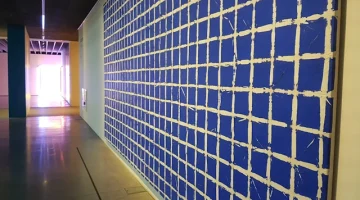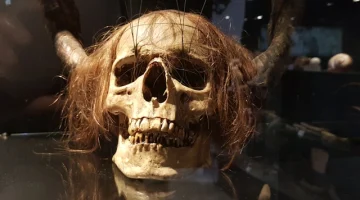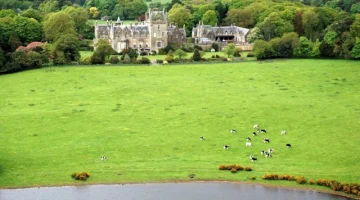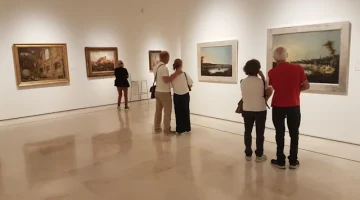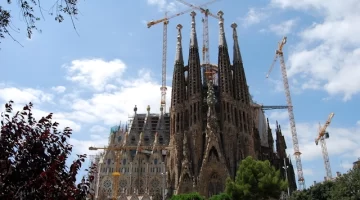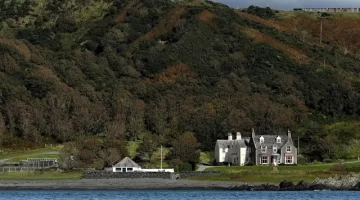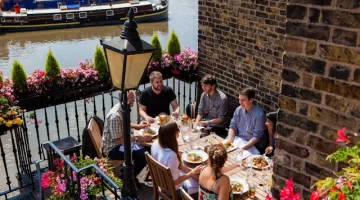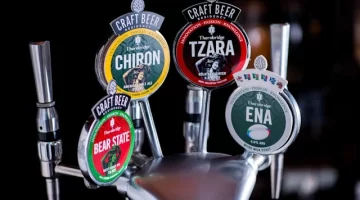Vieux Port in Marseille
The Travel Pages takes a tour of the Vieux Port in Marseille, visiting the quai des Belges, Palais de Pharo, the Abbaye Saint-Victor, and Cathédrale de la Major.

When you first arrive at the Vieux Port and witness the noisy traffic, the tourist crowds, the souvenir sellers and the thousands of boats tied up in the harbour, you might wonder what the attraction is. Well, give yourself a day or two to get used to it, and you’ll realise that all this is part of the charm – it’s the busy buzz of Marseille. It’s a long way from the days when it was the original tiny harbour which the ancient Greeks sailed into, to trade with the first settlers.
Quai des Belges and Markets


The fish market on the quai des Belges is a modern reminder of those origins, though, with fishermen from along the coast coming to lay their catches out every morning of the week and looking for customers. There’s also a more general market on a Sundays where you can buy ceramics and other crafts, as well as local food and drink.

Harbour Entrance
The entrance to the harbour is guarded by two fortresses. Fort St-Jean, on the north side, dates from the 12th century. Fort St-Nicolas, built by Louis XIV on the south side, is still a military post. Stroll between them along the waterfront, stopping at the many bars, restaurants and cafes that line the quaysides.

If the sight of all those boats makes you want to take to the water yourself, there are several excursions from quai des Belges and quai du Port. You can also cross the harbour on the little ferry César.

If you’re more of a landlubber then you can also catch the tourist train (also referred to as the Noddy Train) at the harbour.

Palais du Pharo
For the best view of the port, walk along the southern side and up to the gardens around the Palais du Pharo, which was built by Napoleon III for his wife, the Empress Eugenie.

You can’t visit the palace as it is now a conference centre, but the gardens are a very popular spot with the locals, especially when the sun goes down and casts a warm glow over the busy port down below. From here, Marseille is transformed into a stunning beauty.

Abbaye Saint-Victor
On the way to the Pharo a short detour inland leads to the Abbaye Saint-Victor, one of Marseille’s real gems. The present building dates mainly from the 14th century, but an early church that was put up here in the 5th century was the city’s first basilica. Today it has very simple decoration inside, but is all the more beautiful for that. The gentle sound of chanting and the smell of incense fill the air, providing the perfect retreat from the harbour noise.

Don’t miss the crypt, an ancient burial place that’s even more special, with tombs dating back to the 2nd, 3rd and 4th centuries. It tingles with atmosphere.
Cathédrale de la Major

On the north side of the Vieux Port, if you walk round the quai du Port, is the Cathédrale de la Major. This huge multi-domed, neo-Byzantine building, completed in 1893, seems even larger compared to the intimacy of Saint Victor. The delicacy of its mosaic floors contrasts with the massive pillars and the amazing domes – get underneath them and look up, for the full effect. Propped up next to the Cathedral are the rather forlorn remains of a much older church, mainly dating back to the 11th century but with some Roman elements too.
Don’t miss our page on the best restaurants and bars around the Vieux Port.
Cathédrale de la Major
place de la Major, 13002 Marseille
04 91 90 53 57
Closed Monday
Abbaye Saint-Victor
3 rue de l’Abbaye, 13007 Marseille
04 96 11 22 60
Open daily
Jardin du Pharo
Open daily
Marcel Pagnol
For cinema fans, Marseille will be forever linked with Marcel Pagnol’s trilogy, Marius, Fanny and César, filmed in the 1930s. Pagnol (1895-1974) moved to St Loup, near Marseille, at age three. After studying at the University of Aix-en-Provence, he became a teacher and then a playwright. He later turned to directing films from his own plays and screenplays.
Pagnol wrote affectionately about the people of Provence, their lives, hopes and fears. Marseille’s Vieux Port was the setting for the trilogy. Featured in the films were card games under the arches of the Bar de la Marine, and the cross-harbour ferry that today bears the name of one of the characters.
In the 1980s, two internationally popular films Jean de Florette and Manon des Sources were adapted by Claude Berri from Pagnol’s original story. Pagnol had first written and directed it in 1952 as a single film, Manon des Sources, starring his wife Jacqueline. You can follow in the footsteps of Pagnol on a special guided tour from the tourist office, usually in French only.
This article is also featured on GPSmyCity. To download this article for offline reading or create a self-guided walking tour to visit the attractions highlighted in this article, go to Walking Tours and Articles in Marseille.


